
Do you need to lift to failure to achieve muscle growth?
In the realm of resistance training and muscle hypertrophy, understanding the complexities of training methodologies is vital for optimising results. A recent meta-analysis by Refalo (2023) has delved into the world of muscle growth. They categorised studies into distinct themes and was able to shed light on the nuanced dynamics that influence muscular development.
From the impact of different velocity loss thresholds to training until failure, each theme explores a facet of the lifting landscape. The study goes beyond conventional wisdom, challenging established thoughts about the optimal approaches to resistance training for muscle growth.
The study unveils potential shifts in focus, questioning the primacy of failure-centric training and prompting a reconsideration of factors like velocity loss, set failure definitions, and volume load.
Let’s dive in
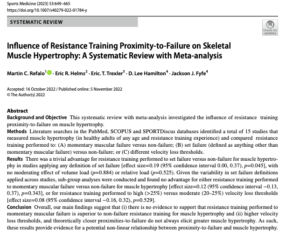
The aim of the study
The primary objective of the study was to critically evaluate existing literature and discern the influence of training to failure on muscle growth. This systematic review and meta-analysis categorised relevant studies into three distinct themes, each shedding light on different aspects of the relationship between training to failure and its effects on muscular development.
Muscle growth after resistance training
Engaging in resistance training is a fundamental pathway to achieving muscle growth or scientifically termed muscle hypertrophy. This transformation in muscle structure is influenced by various factors
Such as:
- Exercise volume
- Lifted weight (load)
- Training frequency
- Speed of lifting.
A critical aspect in this process is known as “proximity-to-failure,” which refers to how closely one approaches muscle fatigue during repetitions.
However, delving into the scientific literature reveals a challenge: there exists inconsistency in both defining and measuring proximity-to-failure. This lack of constancy complicates our ability to understand the precise impact of proximity-to-failure on muscle growth and hinders the practical advice for adjusting the parameter in training routines.
Studies propose an interesting correlation between velocity loss and muscle growth. Specifically, they suggest that a higher velocity loss, exceeding 25%, during resistance training tends to be more effective in promoting muscle growth compared to lower losses, those at or below 25%. Intriguingly, the distinction between velocity losses within the range of 20-25% and those exceeding 25% appears to be minor, suggesting a non-linear relationship between velocity loss and its impact on muscle growth.
Compounding these intricacies is the absence of a universally agreed-upon definition for the term “failure” in the scientific literature, further complicating the study of proximity-to-failure in the context of resistance training. This lack of a standardised criterion for what counts as failure introduces ambiguity, posing challenges in drawing clear conclusions about the optimal proximity-to-failure range for maximising muscle growth.
The video below explains velocity loss is more detail
Methods
Systematic Review with Meta-Analysis | 15 eligible studies analysed
Research Questions:
- Effect of Resistance Training to Failure vs. Non-failure on Muscle Hypertrophy (5 studies included)
- Influence of Velocity Loss on Muscle Hypertrophy (4 studies included)
- Muscle Hypertrophy with resistance training to Momentary Muscular Failure (6 studies included)
Results
- 9 studies looked at two ways of doing resistance training: going until people can’t do more reps (set failure) and stopping before that point. They measured muscle growth in different muscle groups.
- 5 of these studies used the “momentary muscular failure” definition and were grouped as Theme A. The other four studies used different definitions for set failure and were grouped as Theme B.
- Among these 9 studies, five made sure the total work done was the same in both methods, while three did not.
- In these studies, 5 used heavy weights (more than 50% of their max), and 2 used lighter weights (50% or less of their max).
- In Theme A (momentary muscular failure), 4 out of five studies didn’t find any big differences in muscle growth between the two methods.
- In Theme B (other set failure definitions), there were also no significant differences in muscle growth between the 2 methods.
- Another 6 studies looked at resistance training in people who were already fit. They compared doing reps quickly until you had a big loss in speed (>25%) and doing them at a moderate speed (20-25%) and measuring muscle growth (Theme C).
- Out of these 6 studies, five saw muscle growth in both fast and moderate rep speeds. However, they didn’t find significant differences between the two methods in each study.
Find the full study break down HERE:
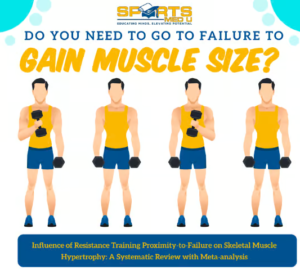
The Impact of Volume Load, Relative Load, and Set Failure in muscle growth
A significant theme emerges concerning the influence of volume load, relative load, and the definition of set failure.
In Theme A of the study, the comparison was made between resistance training conducted until the point of momentary muscular failure (inability to perform more repetitions) and training sessions that stopped short of reaching this point (non-failure).
Surprisingly, the findings revealed NO substantial difference in muscle growth between these two approaches. Whether pushing to the limits until momentary muscular failure or stopping just before, the observed difference in muscle growth was so minute that it held negligible practical significance.
This implies that, at least within the parameters studied, the distinction between reaching momentary muscular failure and stopping short does not yield a substantial impact on muscl egrowtrh
The Impact of Velocity Loss on Muscle growth
An essential question in resistance training and its effects on muscle hypertrophy revolves around the magnitude of velocity loss achieved, and by extension, the theoretical proximity-to-failure reached during these training sessions.
In the study they found a statistically significant difference between high velocity loss and those with moderate velocity loss when looking at muscle growth. In simpler terms, the degree of fatigue experienced during resistance training sessions influenced the subsequent increase in muscle size.
Remarkably, the findings indicate that higher velocity drop, indicative of greater fatigue, resulted in a more substantial increase in muscle size. This insight suggests a direct correlation between the intensity of fatigue, as reflected by velocity loss, and the followed increase in muscle size.
Lifting To Failure or Not to Failure?
In the exploration of how the cessation point, also known as proximity-to-failure, influences muscle growth during resistance training, on obstacle emerged: the absence of a definition of “set failure” in research. This lack of agreement in defining failure poses a significant obstacle to understanding the relationship between stopping points and muscle hypertrophy.
Previous analyses attempting to compare the effects of training until failure, inclusive of momentary muscular failure and alternative definitions, versus non-failure showed inconclusive results. No significant differences in muscle growth were identified between these two approaches, adding to the complexity of deciphering the optimal training strategy.
However, when the researchers broadened their perspective to encompass all studies, irrespective of their specific failure definitions, a subtle advantage for training until failure surfaced.
Adding a layer of complexity, a deeper investigation into studies based on their unique failure definitions uncovered two intriguing observations:
(i) Training until momentary muscular failure did not demonstrate a notable advantage over stopping before reaching that point concerning muscle growth.
(ii) Proximity-to-failure, or getting closer to the point of failure, did not consistently result in enhanced muscle growth. This nuanced exploration suggests that the relationship between training to failure and muscle growth is heavily nuanced, with specific definitions and proximity considerations contributing to the overall complexity.

Relationship of sets for muscle growth
The authors suggest that the total number of sets performed per muscle group each week, a factor consistent in seven out of the nine studies analysed, may exert a more substantial impact on muscle growth than the actual amount of weight lifted, commonly referred to as volume load.
This proposition challenges the conventional emphasis on sheer weight lifted in resistance training, hinting at the potential significance of the overall volume of work performed.
Relative Load on Proximity-to-Failure and Muscle growth
There is an inherent difficulty that people face in accurately estimating their proximity to muscle failure when lifting lighter weights in comparison to heavier weights. This challenge is attributed to the discomfort associated with lifting lighter weights, making it challenging to discern the point at which one is truly close to muscle failure.
The proposed idea suggests that, particularly when lifting lighter weights, people should aim to approach closer to muscle failure to ensure optimal engagement of muscle fibers at their maximum capacity.
The Impact of velocity loss in muscle growth
In a recent meta-analysis, researchers delved into the influence of different levels of velocity loss on muscle growth. The findings revealed that experiencing a more substantial loss of speed (> 25%) during repetitions, a trend observed in the majority of the studies, was more useful to muscle growth compared to a lower loss (≤ 25%).
Additionally, the study uncovered that when athletes incurred higher velocity losses within the range of 20-50%, indicating a closer approach to muscle failure, their muscles exhibited a tendency to grow more. Notably, this relationship is intricate and doesn’t follow a straightforward, linear pattern.
However, interpreting these findings requires caution. Individuals may have varying levels of proximity to failure, even when undergoing the same amount of speed loss during their exercises. Consequently, getting closer to failure doesn’t consistently guarantee a proportional increase in muscle growth.
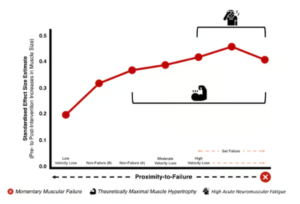
Applying muscle growth principles in clinical practice
When aiming to enhance muscle growth through resistance training, achieving proximity to muscle failure is crucial, typically involving around 12-20 sets per week for a specific muscle group. However, it’s important to note that reaching momentary muscular failure isn’t necessarily superior.
Approaching muscle failure in a set tends to exert increased tension on type II muscle fibers, contributing to muscle growth. Yet, excessive fatigue can impede the neural drive and force production of these fibers across multiple sets, potentially compromising speed and power output.
In the context of resistance training it’s not strictly between going to failure or stopping short. Athletes have the flexibility to incorporate both approaches within a single session. An advisable strategy involves leaving some reps in reserve for initial sets and pushing to failure on the last set.
For safety and overall effectiveness, it’s recommended to approach failure cautiously. This involves selecting less complex exercises with lower fatigue risk or reserving failure for the final set.
Additionally, considering factors like:
- Training experience
- Muscle group volume
- Load
Is essential in tailoring resistance training protocols to individual needs.
Final Thoughts
The intricate dance between proximity-to-failure, velocity loss, and other factors challenges preconceptions, encouraging us to approach training methodologies with a critical eye.
The themes exploring reps to failure, set failure definitions, and velocity loss provide a holistic view of the resistance training landscape. Surprisingly, the small differences observed between training to failure and stopping short underscore the complexity of muscle growth dynamics.
The revelation that higher velocity loss correlates with more significant muscle growth adds another layer of understanding. Yet, the cautionary note about the non-linear relationship and the variable nature of proximity-to-failure emphasises the need for a nuanced approach to training.
The impact of volume load and the reconsideration of its significance in comparison to sheer weight lifted challenges traditional ideas. Similarly, the exploration of relative load and the proposed approach of getting closer to failure during lighter weight lifting for enhanced muscle mass growth offer fresh perspectives.
This meta-analysis serves as a compass for navigating the intricate world of resistance training for muscle hypertrophy. It entices us to question assumptions, embrace complexity, and tailor our approaches based on the individual.
Credit
- Hickmott, L.M., Chilibeck, P.D., Shaw, K.A. and Butcher, S.J., 2022. The effect of load and volume autoregulation on muscular strength and hypertrophy: A systematic review and meta-analysis. Sports medicine-open, 8(1), pp.1-35.
- Refalo, M.C., Helms, E.R., Trexler, E.T., Hamilton, D.L. and Fyfe, J.J., 2023. Influence of resistance training proximity-to-failure on skeletal muscle hypertrophy: a systematic review with meta-analysis. Sports Medicine, 53(3), pp.649-665



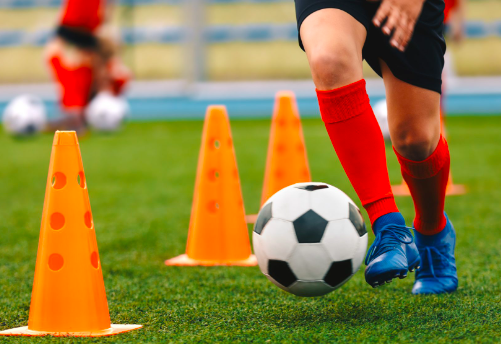

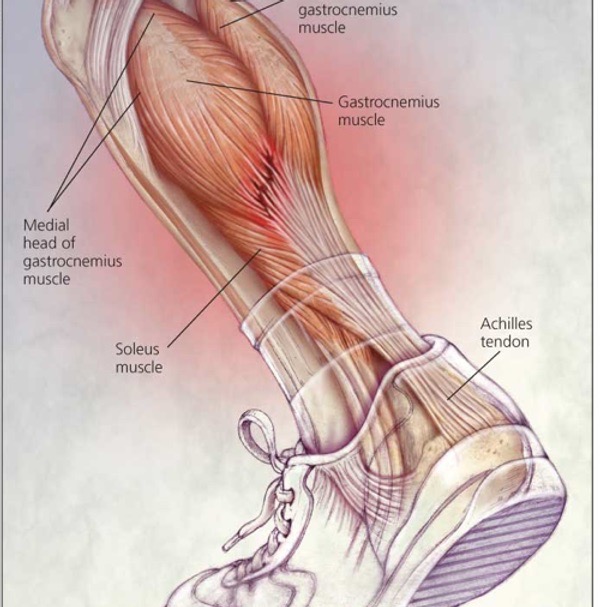
Leave a Reply